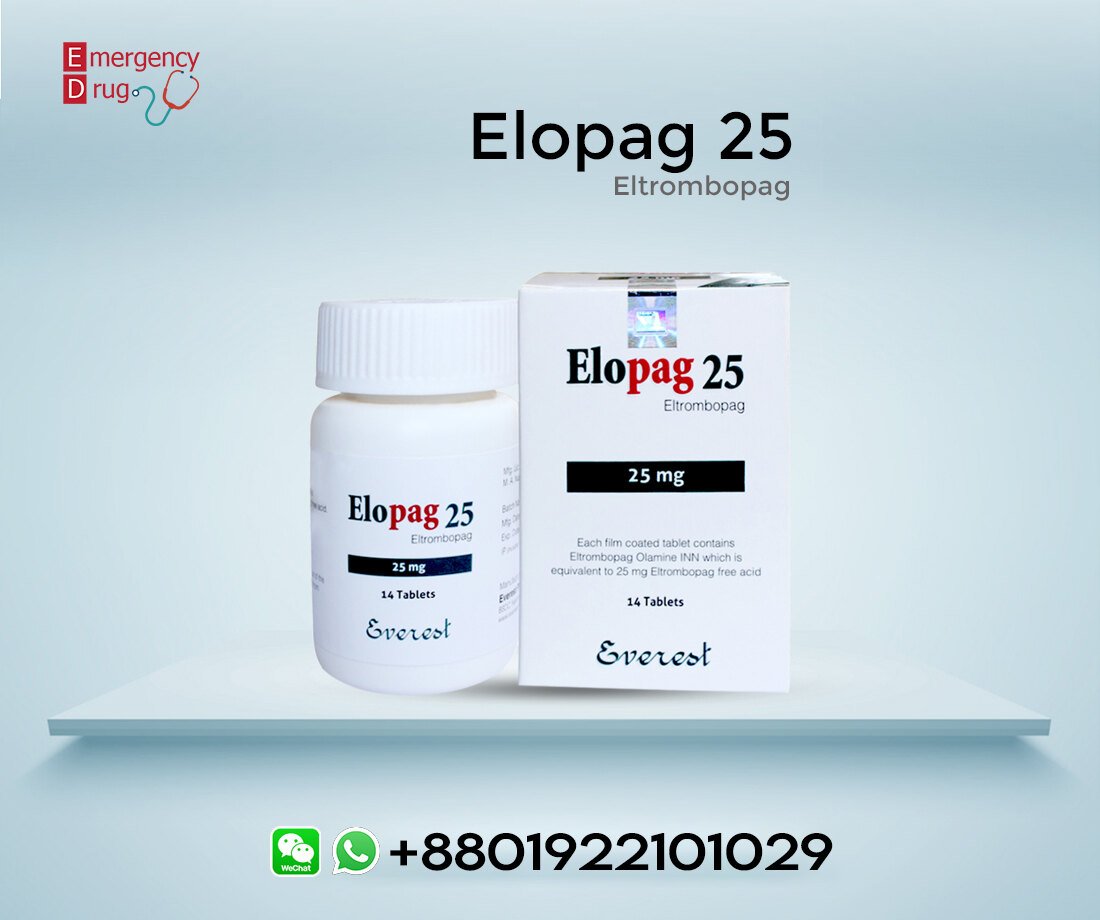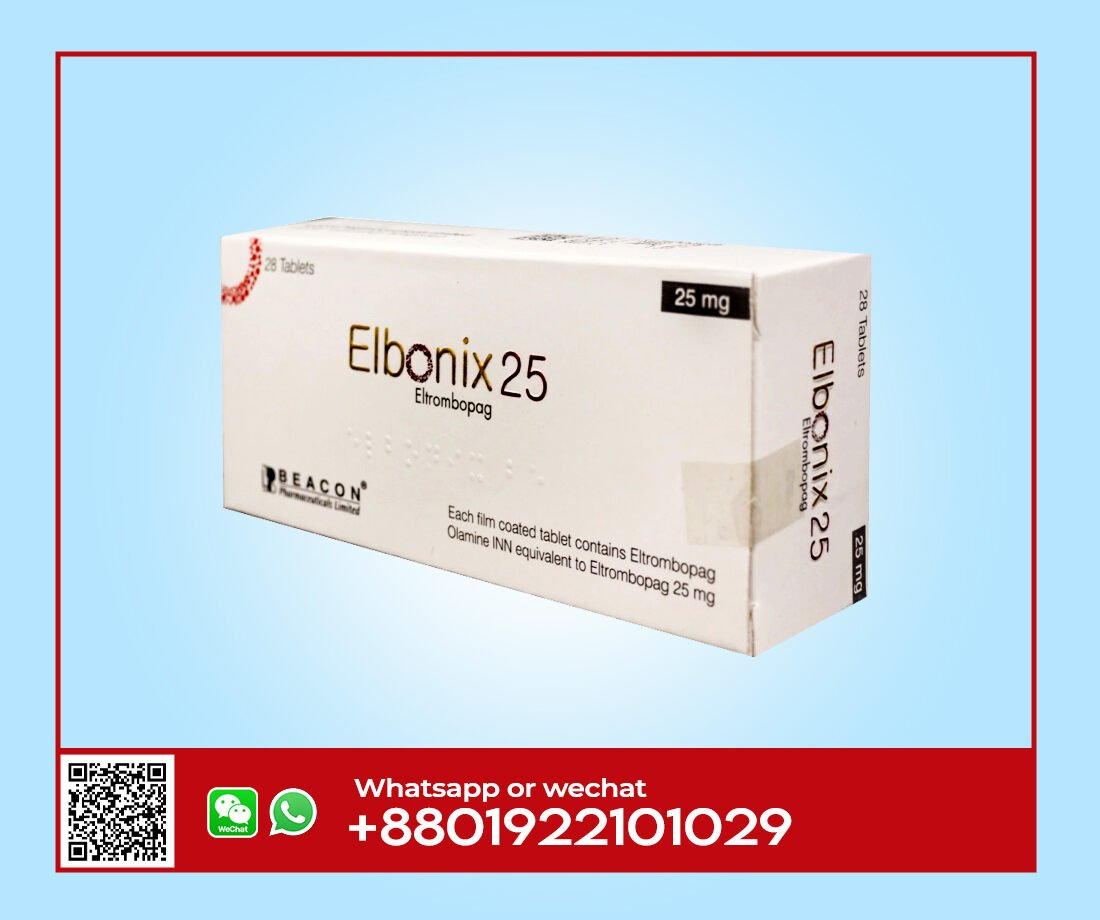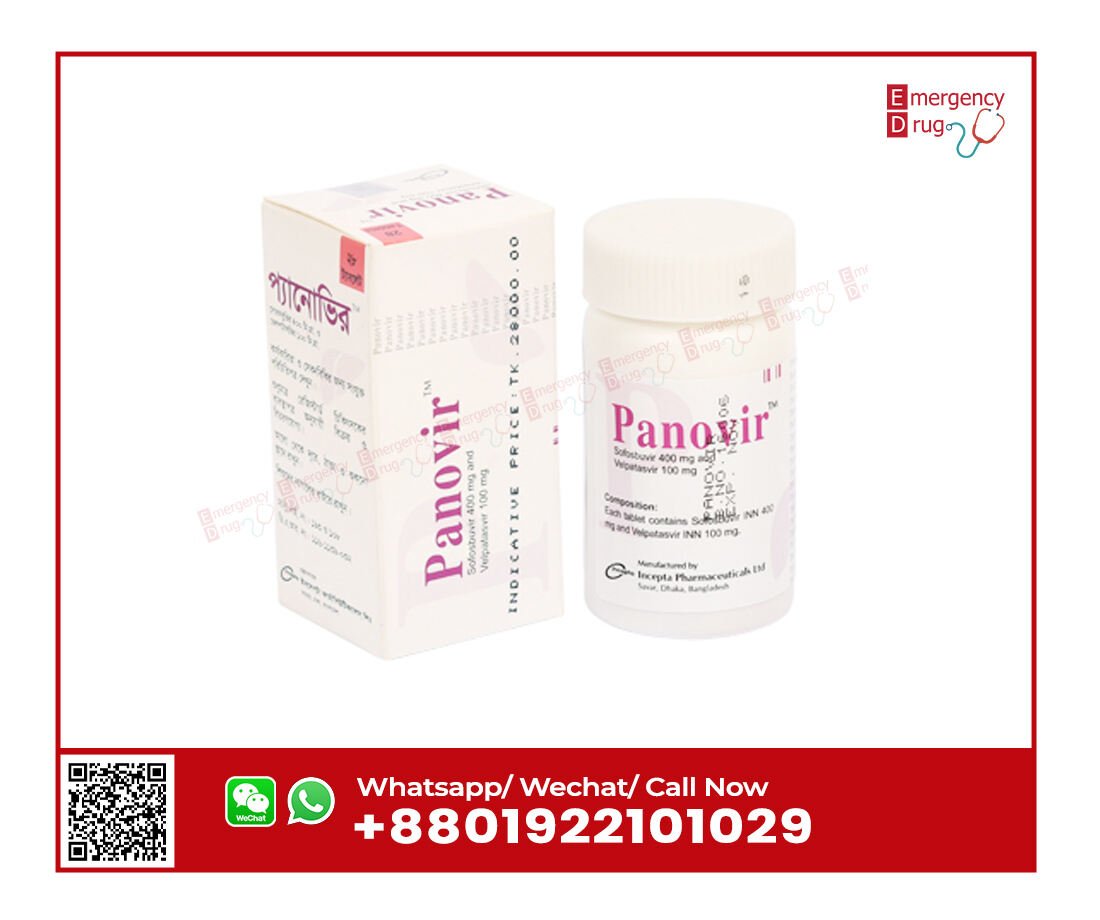Description
Elopag 25 mg oral tablet is available as a brand-name drug. It’s not available as a generic drug. It comes in two forms: oral tablet and oral suspension. Eltrombopag is an orally bioavailable, small-molecule TPO-receptor agonist that reaction with the transmembrane domain of the human TPO-receptor.
Product Features:
| Product Name | : Elopag |
| Generic Name | : Eltrombopag |
| Manufacturer | : Everest Pharma Ltd |
| Indication | : Low blood platelet counts |
| Formulation | : Tablet |
| Strength | : 25 mg |
| Quantity | : 14 Tablets |
| Storage | : Below 30° |
| Registrations | : Export Only |
Elopag 25 mg Price: $60.00
Introduction
Elbonix 25 mg is a stimulator of STAT and JAK phosphorylation. Unlike recombinant TPO or romiplostim, Eltrombopag does not activate the AKT pathway in any way. It should noted that when given to patients with aplastic anemia, other lineages besides platelet count were raised, suggesting that either eltrombopag enhanced the effect of TPO in vivo; or there is a yet open mechanism of action at work.
Uses
Elopag 25 mg use to treat:
1. Low platelet levels due to chronic immune thrombocytopenia (ITP). This is a bleeding disorder. Eltrombopag is given to people who haven’t responded well to other drugs or surgery.
2. Low platelet counts due to chronic hepatitis C virus infection. This drug is used before and during treatment with the drug pegylated interferon and ribavirin.
3. Severe aplastic anemia. Aplastic anemia is when you have bone marrow failure, which results in low levels of platelets, red blood cells, and white blood cells. Eltrombopag use in two ways for this condition:
- First-line treatment of severe aplastic anemia. This drug can be used as the first treatment option in some cases of severe aplastic anemia. For this use, eltrombopag is given in combination with other initial treatments.
- Treatment of refractory severe aplastic anemia. Some cases of severe aplastic anemia are refractory, which means the anemia did not improve after treatment with other medications. Eltrombopag can be used alone for treating these cases of anemia.
Eltrombopag not use to treat myelodysplastic syndrome (MDS).
How it works
Elopag 25 mg capsules belongs to a class of drugs called thrombopoietin (TPO) receptor agonists. A class of drugs is a group of medications that work in a similar way. These drugs often use to treat similar conditions.
Eltrombopag 25 mg works by increasing cells in your bone marrow. It causes these cells to make more platelets. This effect lowers your risk of bleeding. If you have any signs of unusual bleeding or bruising while taking eltrombopag, call your doctor right away. Your doctor may tell you to stop taking this drug if you’re also taking blood-thinning medications.
Side effects of Elopag 25 MG
Elopag 25mg tablet can cause mild or serious side effects. The following list contains some of the key side effects that may occur while taking eltrombopag. This list does not include all possible side effects.
For more information on the possible side effects of eltrombopag, or tips on how to deal with a troubling side effect, talk with your doctor or pharmacist.
More common side effects
The more common side effects of Elopag 25 mg can include:
- Anemia
- Nausea
- Fever
- Tiredness
- Cough
- Headache
- Diarrhea
- Flu
- Loss of appetite
If these effects are mild, they may go away within a few days or a couple of weeks. If they’re more severe or don’t go away, talk to your doctor or pharmacist.
Interactions that increase your risk of side effects
Increased side effects from other drugs: Taking eltrombopag with certain medications raises your risk of side effects from these drugs. Examples of these drugs include:
- Bosentan, ezetimibe, glyburide, olmesartan, repaglinide, rifampin, valsartan, imatinib, irinotecan, lapatinib, methotrexate, mitoxantrone, sulfasalazine, and topotecan. Your doctor may lower your dosage of these drugs if needed.
- Cholesterol-lowering drugs such as rosuvastatin, atorvastatin, fluvastatin, pitavastatin, pravastatin, and simvastatin. Increased side effects can include muscle pain. Your doctor may lower the dosage of your cholesterol drugs.
Interactions of medicine effective
When use with Elopag, these drugs can make eltrombopag less effective. This means it won’t work as well to treat your condition. This is because the amount of eltrombopag in your body may be decreased. Examples of these drugs include:
- Antacids, vitamins, or supplements that contain calcium, aluminum, iron, selenium, zinc, or magnesium. To avoid interactions, you should take eltrombopag two hours before or four hours after taking any of these products.
Disease progression warning
If you have myelodysplastic syndrome (MDS), this drug can cause your condition to progress to acute myeloid leukemia (AML). For people with MDS, this drug also increases the risk of death. Don’t use this drug if you have MDS.
Blood clots warning
This drug increases platelet counts. This may cause blood clots. If you have other blood clot risk factors, ask your doctor if this drug is safe for you.
Cataracts warning
This drug may cause cataracts (a clouding of the lens in your eyes). If you already have cataracts, this drug may make your condition worse. Your doctor will give you an eye exam before starting your treatment with this drug. They will also check you for signs of eye problems during treatment. If you develop cataracts, your doctor will lower your dosage or stop your treatment with this drug.
Allergy warning
This drug can cause a severe allergic reaction. Symptoms can include:
- Trouble breathing
- Swelling of your throat or tongue
- Skin rash
- Itchiness
Don’t take this drug again if you’ve ever had an allergic reaction to it. Taking it again could be fatal (cause death).
Food interactions warning
Foods that contain calcium may make Elopag less effective. These foods include dairy products, such as milk and cheese. Take this drug at least two hours before eating calcium-rich foods, or four hours after eating calcium-rich foods.
Warnings for certain health conditions
- Myelodysplastic syndrome (MDS): This drug can cause your condition to progress to acute myeloid leukemia (AML). It also raises your risk of death. Don’t use this drug if you have MDS.
- Liver problems: If you have liver problems or a history of liver disease, you may not be able to process this drug well. This medication may also decrease your liver function, making your liver disease worse. Ask your doctor if this medication is safe for you.
- Blood clotting disorders: This drug may increase your risk of blood clots. Ask your doctor if this medication is safe for you.
Warnings for other groups
Pregnant women
- There haven’t enough studies done in humans to be certain how this drug might affect a pregnancy. Research in animals has shown negative effects to the pregnancy when the mother takes the drug. However, animal studies don’t always predict the way humans would respond.
- Talk to your doctor if you’re pregnant or planning to become pregnant. This drug should only use if the potential benefit justifies the potential risk. If you become pregnant while taking this drug, call your doctor right away.
Breastfeeding women
- This medication not recommend for use while breastfeeding. This drug may pass into breast milk and cause side effects in a child who is breastfed. Talk to your doctor if you breastfeed your child. You may need to decide whether to stop breastfeeding or stop taking this medication.
Children
- This drug has not studied in children younger than 1 year with chronic immune thrombocytopenia. It should not use in children younger than 1 year for this condition. This drug has not studied in children younger than 2 years with definitive immunosuppressive therapy-naïve severe aplastic anemia (in combination with other medications). It should not use in children younger than 2 years for this condition. (Therapy naïve means the condition has not been treated before.)
If miss a dose
If you miss a dose, wait and take your next scheduled dose. Do not take more than one dose of this drug in one day.
For more Oncology medicine, visit our SHOP








Reviews
There are no reviews yet.